Aberdeen District Tramways
History
The Aberdeen District Tramways Company opened the first stretch of its standard-gauge horse tramway on the 31st August 1874, having significantly reined back on its original ambitions due to lack of capital. The first tranche of lines ran broadly east to west (from Queens Cross to North Church) and northwest from St Nicholas St to Causeway End and Kittybrewster.
Despite good passenger numbers, the company struggled initially, in part due to high feed prices and a general recession that caused a downturn in trade, but also to poor management. By 1878 however, the company was in a much better position, and was finally able to pay a dividend and thus attract outside investment to fund further lines. The latter were opened on the 1st September 1880 and comprised: a new line out to Mannofield in the Southwest, and extensions northwards from North Church to the Cattle Market, and northwestwards from Kittybrewster to Woodside. Soon thereafter, these were supplemented by horse-bus feeder services, and a new tramway line from Couperstone Corner on the Mannofield line, running roughly southwards to Bloomfield Rd, which opened on the 25th December 1883. This was followed on the 30th November 1888 by a circular route from Queens Cross, clockwise via Kingsgate and Rosemount to Union St, along with significant doubling of track through the main city thoroughfares (Union St and Castle St).
By the late 1880s, the company's finances were reasonably healthy, and further extensions were planned. The line along King Street was extended northwards from the Cattle Market to Merkland St on the 30th November 1888, from there to University Rd in July 1892, and finally, to Bridge of Don on the 24th August the same year. In the south and west of the city, the line out to Bloomfield Rd was extended to Bridge of Dee on the 24th of August 1894, and a new line was opened from Queens Cross westwards to Bayview on the 22nd August 1896. This latter line was to be the company's last, taking the system to 11.87 route miles.
The corporation, which was increasingly inclining towards a municipally owned and operated electric tramway system, and which had the right to compulsory purchase various sections of the tramway (depending on when they had been built), approached the company in late 1895 with a view to buying the undertaking, but were initially rebuffed. The company viewed the next decade as a period when they could reasonably expect to maximise the return on their investment (from a large, well-run and well-maintained system), so expected adequate recompense in terms of the offer per share. This was however tempered by the possibility of the corporation getting the system for scrap prices as the clock wound down, with the system inevitably deteriorating due to lack of investment. Somewhat fortuitously, another player appeared on the scene in the form of the Great North of Scotland Railway, which envisaged working the tramway in conjunction with its railway lines (existing and planned). This undoubtedly focused the corporation's mind, and they quickly returned with an enhanced offer, which was much more to the company's liking.
The tramway was formally handed over to the corporation on 26th August 1898; the corporation continued to operate the horse trams pending conversion to electric traction, the last horse car service running on the 2nd of June 1902 on the Rosemount Circle.
Uniforms
In common with the majority of horse tramways in the UK, drivers and conductors wore informal but smart attire: trousers, jackets (including force coats and Norfolk jackets), waistcoats, shirts and ties, along with overcoats, which in later years appear to have been company issued, or possibly specified by the company for self purchase. Headwear appears to have largely followed the fashion of the day, initially the bowler hat and Luggit Bonnet (a local favourite), though later on, flat caps and straw boaters (in summer) increasingly made an appearance. No badges of any kind were worn on either the uniforms or the hats. There is some photographic evidence to suggest that conductors may have worn licences on the straps of their cash bags in later years, though it is very weak.
My thanks go to Mike Mitchell for sharing his knowledge of this Aberdeen horse tramway, and Alan Brotchie for the high-resolution photos.
Further reading
For a full history of the tramway, see: 'Aberdeen District Tramways' by M J Mitchell and I A Souter; N B Traction (1983).
Images
Horse tram drivers and conductors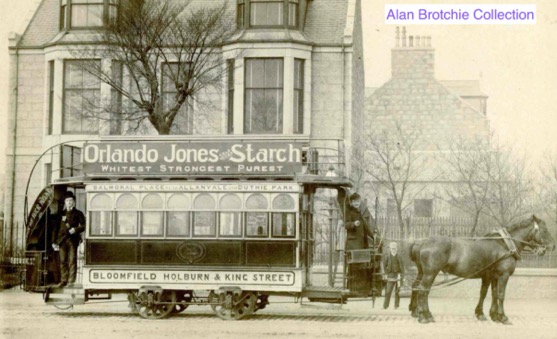
A Starbuck-built horse car of the Aberdeen District Tramways Company in King Street — photo undated, but judging by the fashions on display, probably taken in the late 1880s.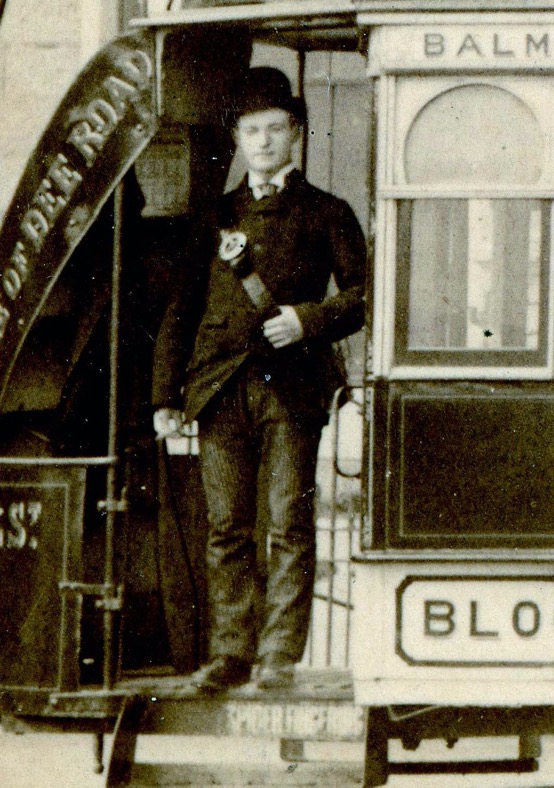
An enlargement of the above photo showing the conductor. He is wearing a smart jacket and coat, along with a shirt and tie, topped off by the tall bowler hat typical of the period. His cash-bag strap bears a large buckle which if other horse tramway concerns are anything to go by, possibly bore the company's name. 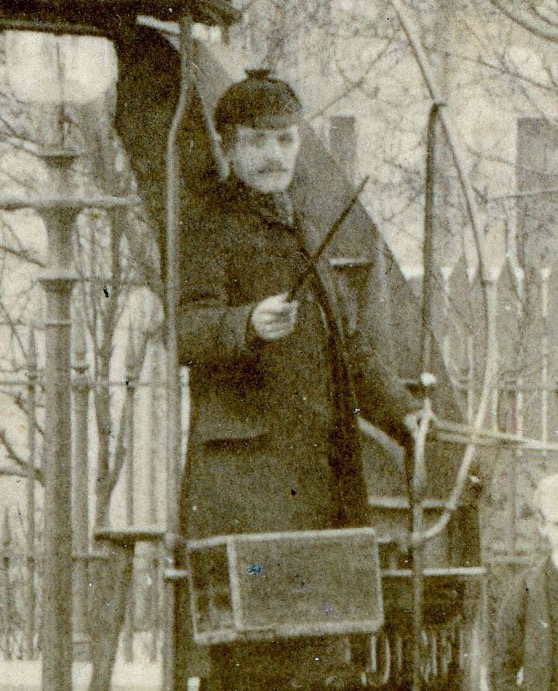
Another enlargement of the above photo, this time showing the driver, whip in hand, who sports a much-favoured local style of headwear, the distinctive 'Luggit Bonnet' with ear flaps. His long coat appears to be devoid of insignia.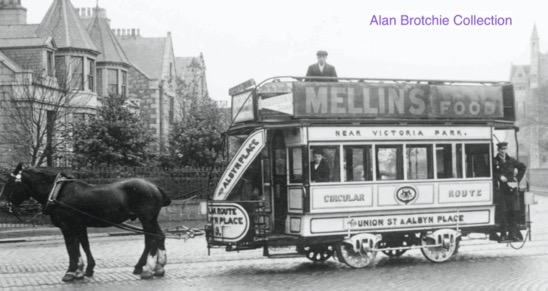
Aberdeen District Tramways Company Horsecar No 9 at Queens Cross — photo undated, but given the immaculate condition of the vehicle, possibly taken when it was new in late 1888.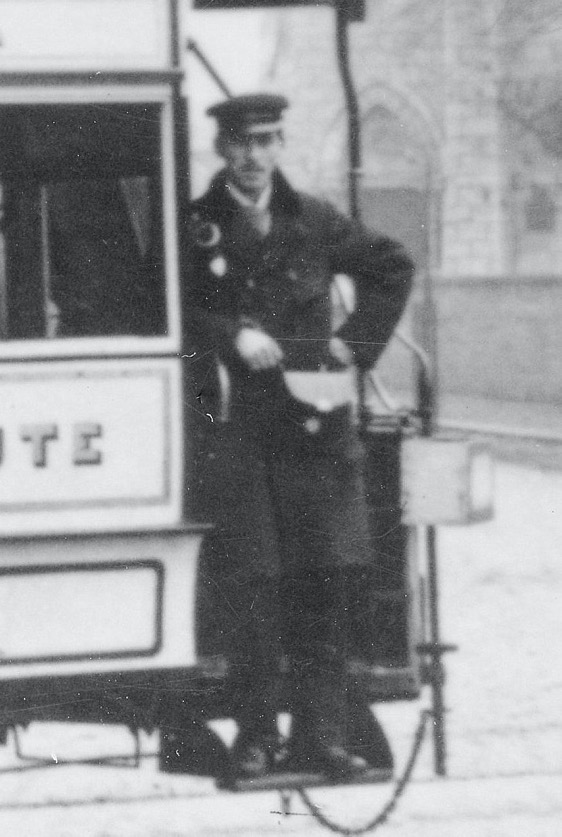
An enlargement of the above photo showing the conductor. He is wearing an overcoat and with black collars and a soft-topped cap without a badge. The reflection below the cash-bag buckle is almost certainly a pointed metal tip on the cash-bag strap.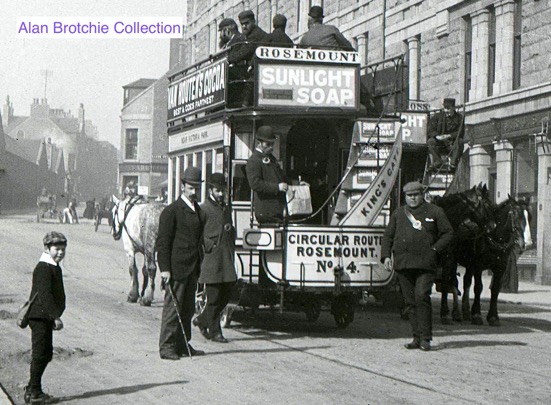
Horse Car No 4 stands next to another unidentified car in South Mount Street — photo undated, but probably taken in the early 1890s.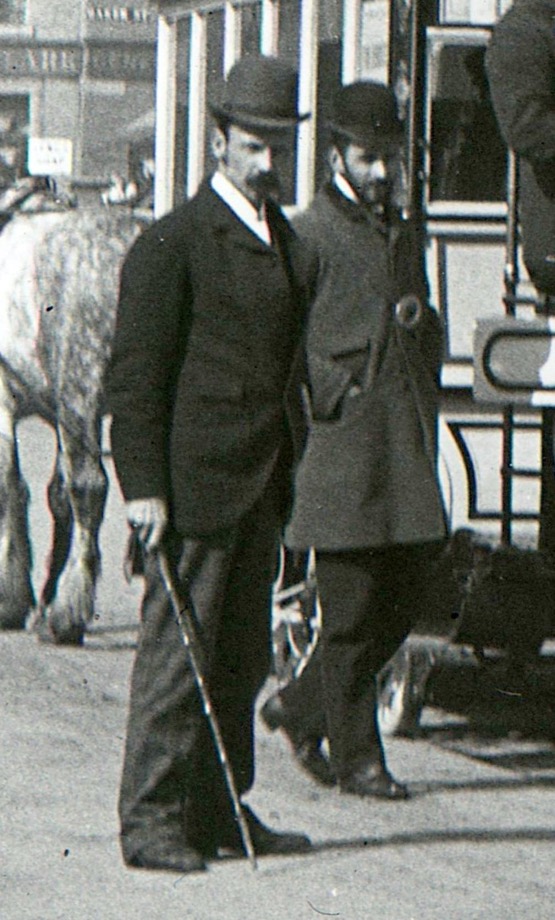
A blow-up of the above photo showing one the conductors (right), who is very smartly attired.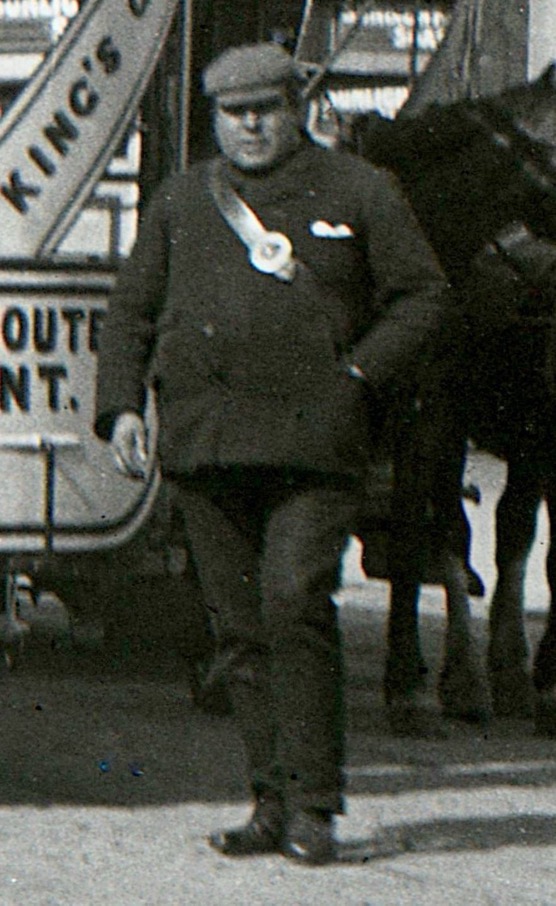
Another blow-up of the above photo, this time of the other conductor, who is less smartly fitted out in a short jacket and a cloth cap. Once again, there is no evidence of badges or licences.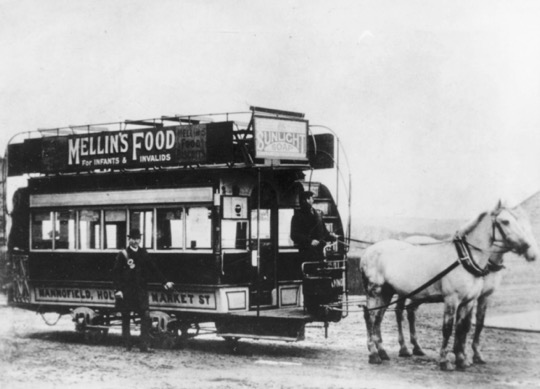
The conductor and driver of a Mannofield horsecar stand at what is possibly the terminus — photo undated, but probably taken in the 1890s. Photo courtesy of the Tramways and Light Railway Society, with thanks to David Voice.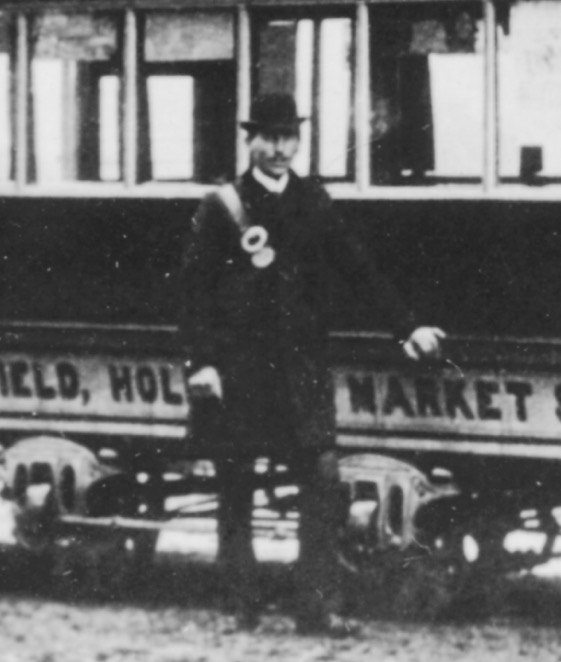
An enlargement of the above photo showing the conductor, who is wearing a smart overcoat, possibly company issued, though more than likely self-purchased. The oval disc beneath his cash-bag strap may possibly be a licence badge, a small number of other images also showing similarly located and shaped discs.